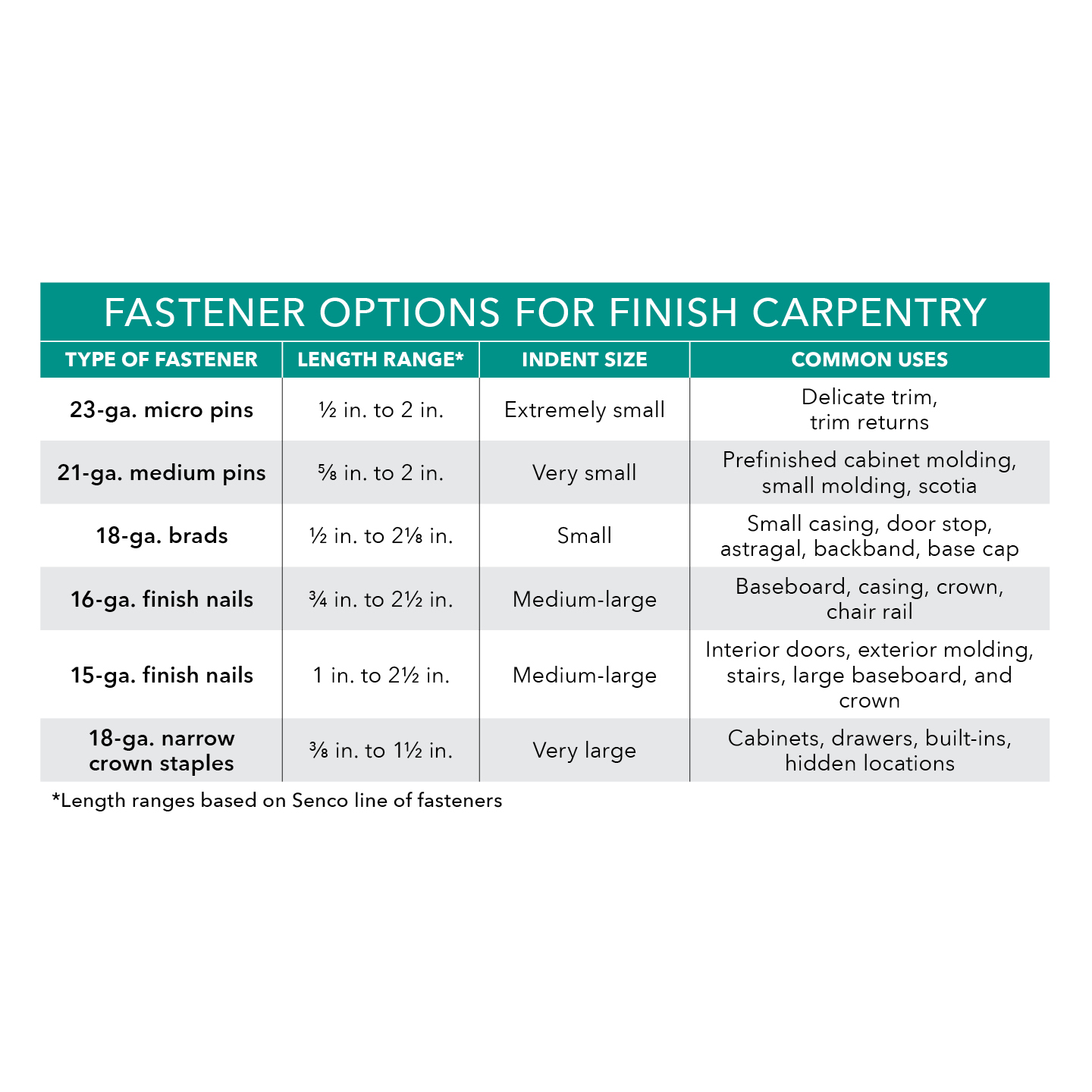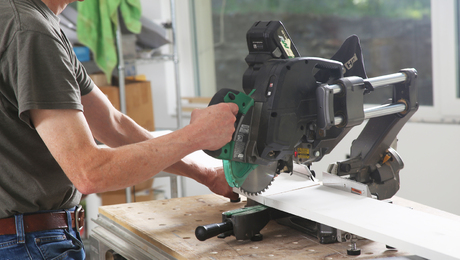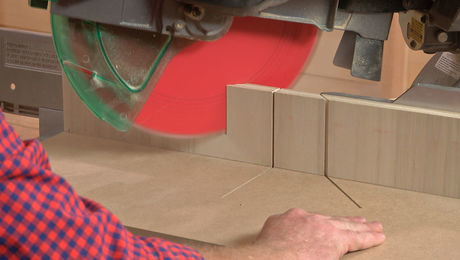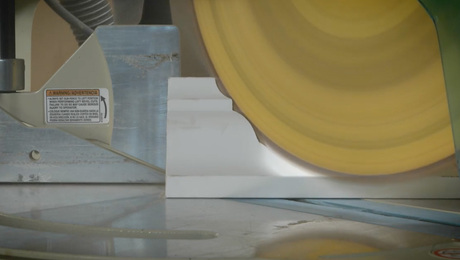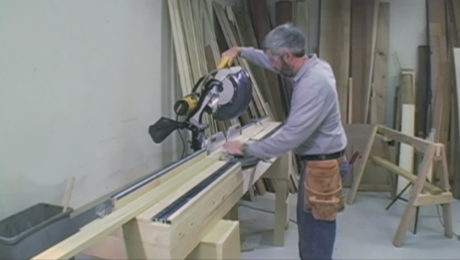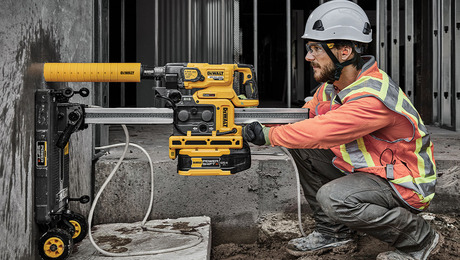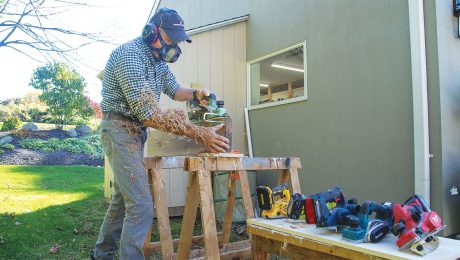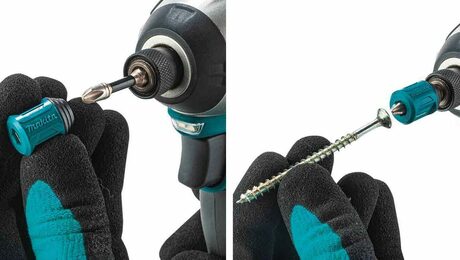Cutting Crown Molding
Calculating miter and bevel angles so you can cut crown on compound-miter saws.
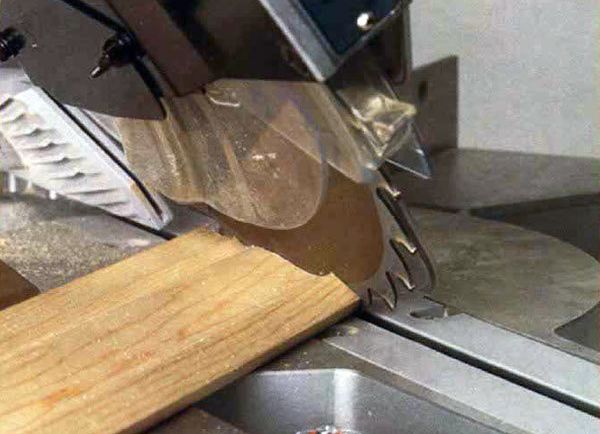
Synopsis: This is a detailed, technical explanation of how to calculate angles for cutting crown molding on a compound-miter saw. Get ready for some math. A sidebar talks about working with very wide crown molding and how to assess the difficulty of coping inside corners on different molding profiles.
A few years ago, I purchased an 8-in. compound-miter saw. It was light and compact, but had the same capacity for cutting large crown moldings as a regular 10-in. miter saw. Remodeling Victorian homes, I install a lot of crown, so this seemed to be the perfect power tool for me.
I eagerly brought the saw to the job and set the miter and bevel angles for 90° corners, as indicated by the instruction manual. When I cut my first lengths of crown, the joints weren’t perfect, but I figured that the walls and ceiling weren’t perfect either, so with a little shaving here and there I was in business.
The next crown molding I had to install, however, was a larger one, and when I cut it and held it up to the ceiling, I was looking at a pie-shaped gap 3/8 in. wide. What’s more, this room had two corners that were 135°, not 90°, and the saw’s instruction manual gave no miter or bevel angles for this situation. I soon discovered that throwing miscut pieces around the room in rage and frustration is a very slow and expensive way to complete a job.
By now I was ready to return the saw to the dealer and demand a refund. But in desperation I grabbed the instruction manual one last time. According to the manual, the miter and bevel angle settings were correct for 90°corners when using a standard crown, which makes a 38° angle to the wall. Wait a minute… what if my crown doesn’t make a 38°angle to the wall?
Fortunately, my daughter’s protractor was in the car, so I was able to measure the angle the crown made to the wall by holding it against the inside of a framing square. The angle was more like 43° or 44°. I checked all the crowns I was installing only to find that none were the same, varying from 35° to 45°.
I finished the day’s work as best I could and went home determined to calculate the angle settings for each of the crowns. Using my wife’s high school math text to brush upon some trigonometry, I wrote down equations and measurements. I worked late into the night, but couldn’t come up with a formula.
I finished the crown job eventually by trial and error, playing with the angles on the saw until they were right. Still, the problem gnawed at me. I spent a lot of late nights scribbling and thinking, but I just couldn’t get it.
Fortunately, I had hung some French doors in the home of Roger Pinkham, professor of mathematics at the Stevens Institute of Technology. So one Saturday morning, at my request, he graciously came to the house and we pored over my notes. Several hours later, we had it. We could calculate the miter and bevel angles for any crown and for any angle.
For more photos, drawings, and details, click the View PDF button below:




